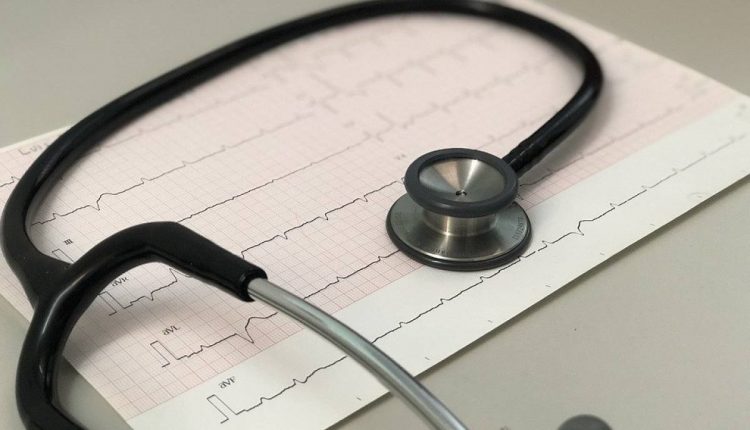
Branch block: the causes and consequences to take into account
A branch block is an abnormality that causes impediments and/or delays in the electrical conduction system of the heart muscle, i.e. in the transmission of the electrical impulses that occur between the atria and ventricles causing the heart to beat
This will make the pumping of blood to the whole body by the heart complex; the delay or blockage could occur either on the left or right side of the ventricles, which are located in the lower part of the heart muscle.
Branch block may be a sign of an underlying disease
If the branch block is on the left, it could be associated with heart disease.
Branches do not cause symptoms in the vast majority of cases, but they may cause: fainting, weakness and feeling faint.
If fainting occurs, a doctor should be consulted in order to investigate the severity of the cause; if you have a heart condition, or if you are aware of the presence of a branch block, you should have frequent medical check-ups.
Normally, electrical impulses tell the heart to beat by means of cardiac contractions, extending to the right and left branches; if there are any arrests or delays in the conduction pathway, caused by a heart attack, the transmission of impulses will be altered causing abnormal heartbeats.
The causes of the lesion, in the left branch block will be: ischaemia, cardiomyopathy, myocarditis, hypertension
In right-sided branch block, on the other hand, they will be: cardiac anomalies present from birth, inter-atrial defect, myocardial infarction, cardiac infections both viral and bacterial, pulmonary embolism.
In order to diagnose a branch block, and identify the causes, the tests to be performed will be: electrocardiogram, in order to record the electrical impulses of the heart muscle and detect any branch block.
Echocardiogram, in order to get detailed images of the structure of the heart muscle and thus understand whether the valves are functioning normally. However, the origin of the branch block will not always be found.
Those suffering from a branch block do not always show symptoms, so there is no need for treatment.
Once the cause of the branch block has been discovered, medication will be administered to reduce the pressure or the effects of the heart failure.
If, in addition to the presence of symptoms, the patient has other heart problems, implantation of a pacemaker may be necessary if the blockage is associated with atrio-ventricular conduction disturbances.
The pacemaker will provide the correct electrical impulses, allowing the heart to have a regular beat.
It may also be necessary to undergo cardiac resynchronisation therapy where left bundle-branch block will be present in patients who suffer from heart pump dysfunction with low ejection fraction; a catheter will be introduced to stimulate the two ventricles in order to synchronise their contraction and improve the efficiency of the heart muscle.
Preventive methods will be to reduce caffeine intake, to stop smoking for smokers, to note the presence of symptoms if present; to point out to the doctor any changes in lifestyle and situations that may be a source of stress; to point out any side effects that may occur as a result of drug therapies.
Read Also
Emergency Live Even More…Live: Download The New Free App Of Your Newspaper For IOS And Android
Myocardiopathy: What Is It And How To Treat It?
Venous Thrombosis: From Symptoms To New Drugs
Cyanogenic Congenital Heart Disease: Transposition Of The Great Arteries
Heart Murmur: What Is It And What Are The Symptoms?
Cardiopulmonary Resuscitation Manoeuvres: Management Of The LUCAS Chest Compressor
Supraventricular Tachycardia: Definition, Diagnosis, Treatment, And Prognosis
Identifying Tachycardias: What It Is, What It Causes And How To Intervene On A Tachycardia
Myocardial Infarction: Causes, Symptoms, Diagnosis And Treatment
Aortic Insufficiency: Causes, Symptoms, Diagnosis And Treatment Of Aortic Regurgitation
Congenital Heart Disease: What Is Aortic Bicuspidia?
Atrial Fibrillation: Definition, Causes, Symptoms, Diagnosis And Treatment
Ventricular Fibrillation Is One Of The Most Serious Cardiac Arrhythmias: Let’s Find Out About It
Atrial Flutter: Definition, Causes, Symptoms, Diagnosis And Treatment
What Is Echocolordoppler Of The Supra-Aortic Trunks (Carotids)?
What Is The Loop Recorder? Discovering Home Telemetry
Cardiac Holter, The Characteristics Of The 24-Hour Electrocardiogram
Peripheral Arteriopathy: Symptoms And Diagnosis
Endocavitary Electrophysiological Study: What Does This Examination Consist Of?
Cardiac Catheterisation, What Is This Examination?
Echo Doppler: What It Is And What It Is For
Transesophageal Echocardiogram: What Does It Consist Of?
Paediatric Echocardiogram: Definition And Use
Heart Diseases And Alarm Bells: Angina Pectoris
Fakes That Are Close To Our Hearts: Heart Disease And False Myths
Sleep Apnoea And Cardiovascular Disease: Correlation Between Sleep And Heart



